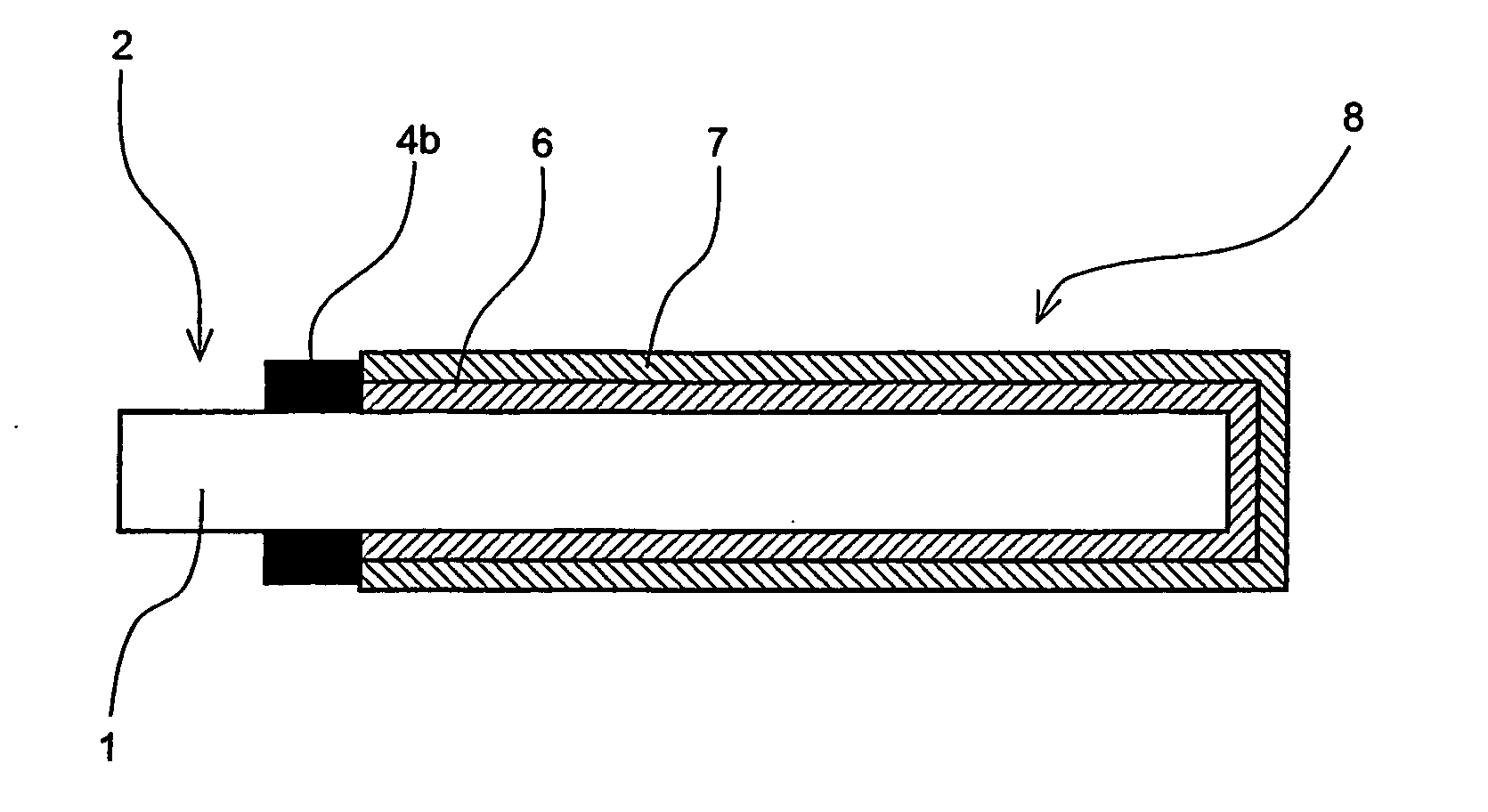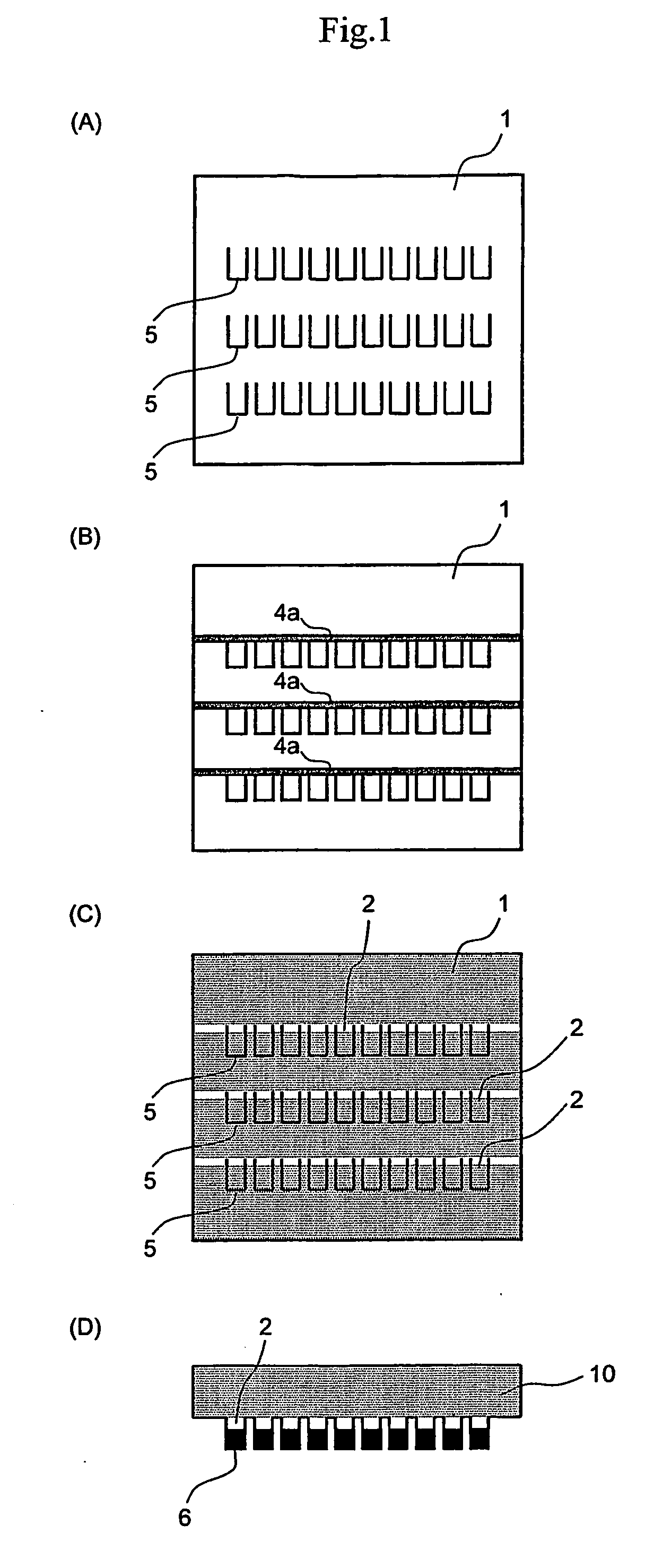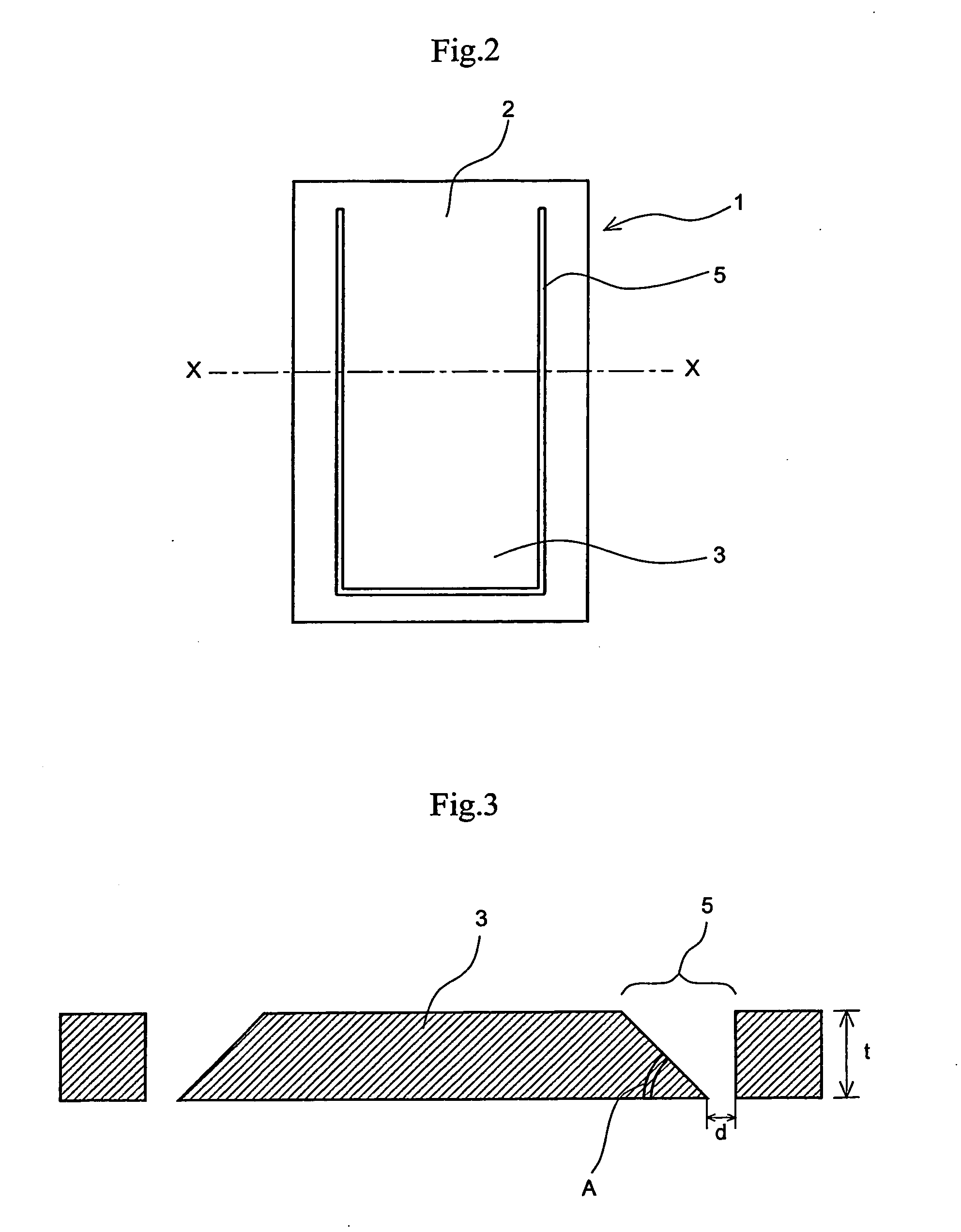Metal foil for capacitor, solid electrolytic capactor using the foil and production methods of the foil and the capacitor
a technology of solid electrolytic capactor and metal foil, which is applied in the direction of liquid electrolytic capacitors, electrolytic capacitors, terminal applications apparatus, etc., can solve the problems of deterioration of capacitor properties, increased leakage current, and difficulty in controlling current distribution, so as to reduce leakage current and stable capacitance
- Summary
- Abstract
- Description
- Claims
- Application Information
AI Technical Summary
Benefits of technology
Problems solved by technology
Method used
Image
Examples
example 1
Step of Making Cut Lines
[0109] On a 200 μm-thick aluminum foil (containing Si: 20 ppm by mass, Fe: 24 ppm by mass, Cu: 33 ppm by mass and Ti: 0.9 ppm by mass), cut lines of a rectangular shape with one side open, each having a width of 200 μm were formed. Each of the rectangular shaped in cut lines to form a capacitor element had a width of 3 mm and a length of 6 mm. As shown in FIG. 1(A), cut lines for 30 capacitor elements were arranged in 3 lines×10 rows.
Etching Step
[0110] Both front and back surfaces of the portion working out to an anode-leading-out-part was covered with a 1 mm-wide resin tape as protective material (FIG. 1(B)) and then, the aluminum foil was dipped in a first electrolytic solution (10 mass % of hydrochloric acid +0.5 mass % of aqueous sulfuric acid solution) at 60° C. and etched by AC electrolytic etching under the conditions shown in Table 1.
Electrochemical Formation Step
[0111] The resin tape was removed (FIG. 1(C)) and a strip cut out in a comb-like ...
example 2
[0118] Multilayer solid electrolytic capacitors were fabricated in the same manner as in Example 1 except for changing the thickness of aluminum foil from 200 μm to 300 μm. The measurement of leakage current and the reflow test were performed in the same manner. The results obtained are shown in Table 2.
example 3
[0119] Capacitors were completed in the same manner as in Example 1 except that in the etching step, the portion working out to the anode-leading-out-part was not protected by the protective material resin tape in Example 1. These capacitor elements were evaluated on the properties in the same manner as in Example 1. The results obtained are shown in Table 2.
PUM
| Property | Measurement | Unit |
|---|---|---|
| acute interior angle | aaaaa | aaaaa |
| thickness | aaaaa | aaaaa |
| curvature radius | aaaaa | aaaaa |
Abstract
Description
Claims
Application Information
 Login to View More
Login to View More - R&D
- Intellectual Property
- Life Sciences
- Materials
- Tech Scout
- Unparalleled Data Quality
- Higher Quality Content
- 60% Fewer Hallucinations
Browse by: Latest US Patents, China's latest patents, Technical Efficacy Thesaurus, Application Domain, Technology Topic, Popular Technical Reports.
© 2025 PatSnap. All rights reserved.Legal|Privacy policy|Modern Slavery Act Transparency Statement|Sitemap|About US| Contact US: help@patsnap.com



